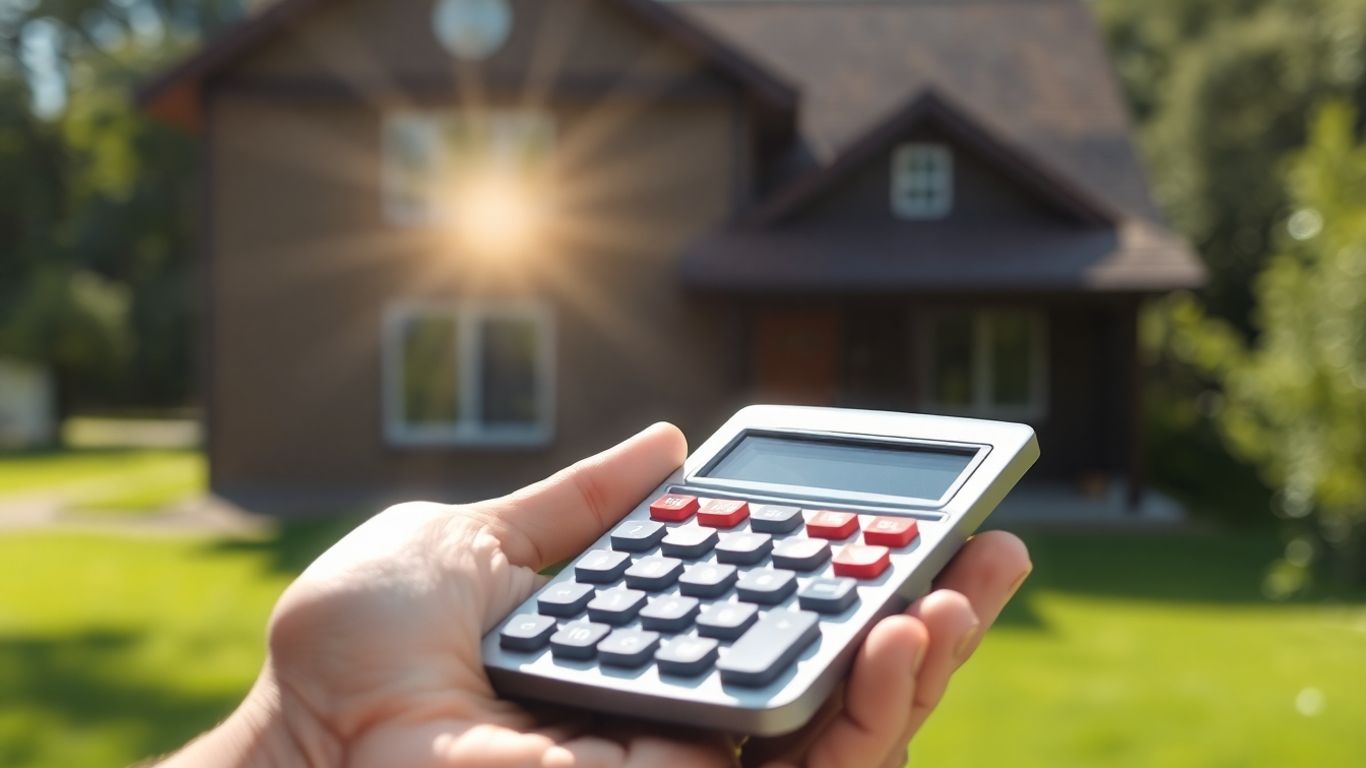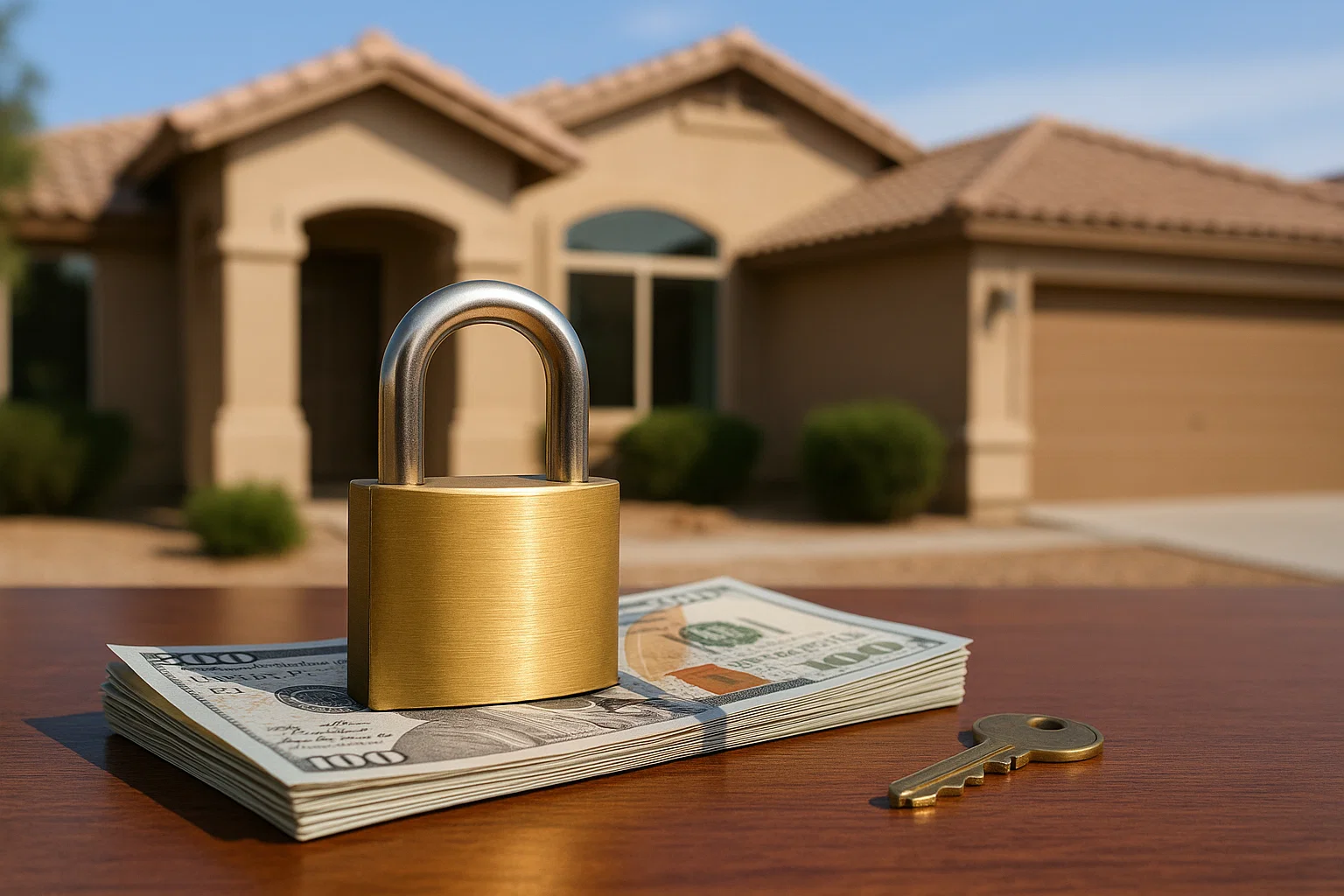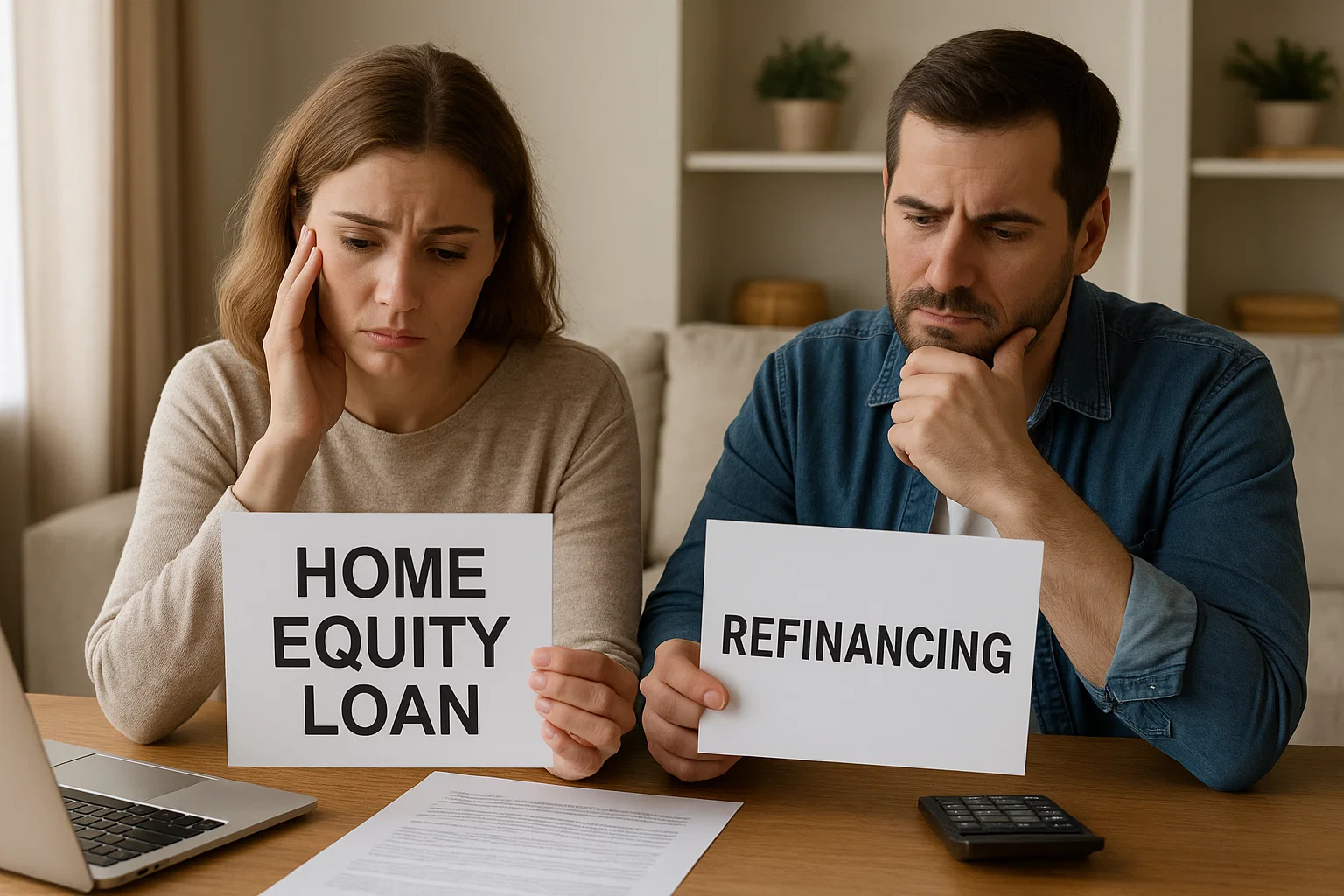Unlock Savings: Your Mortgage Refinance Break-Even Calculator Guide
November 19, 2025
Use our mortgage refinance break-even calculator guide to understand costs, savings, and when refinancing makes financial sense.

Thinking about refinancing your mortgage? It sounds like a good idea, especially if rates have dropped. But before you jump in, it's smart to figure out if it actually makes financial sense for you. This involves looking at the costs of refinancing and comparing them to how much you'll save each month. We're going to walk through how to calculate your mortgage refinance break even calculator point, so you can make a solid decision.
Key Takeaways
- The break-even point is when your monthly savings from refinancing equal the total costs you paid to do it.
- To find your break-even point, divide your total refinance costs by your estimated monthly savings.
- Closing costs, interest rate changes, and how long you plan to stay in your home all affect how quickly you reach your break-even point.
- Refinancing is usually a good idea if you plan to stay in your home long enough to pass the break-even point, leading to overall savings.
- Avoid common mistakes like forgetting all the fees involved or not considering your long-term homeownership plans when calculating your break-even.
Understanding Your Refinance Break-Even Point
So, you're thinking about refinancing your mortgage. It sounds like a great idea, especially if interest rates have dropped since you first got your loan. But before you jump in, it's super important to figure out if it actually makes financial sense for you. That's where the "break-even point" comes in.
What is the Refinance Break-Even Point?
Basically, the break-even point is the moment in time when the money you save from your new, refinanced mortgage adds up to the total amount you spent on closing costs and fees to get that new loan. Think of it like this: you pay some money upfront to get a better deal, and the break-even point is when you've earned that money back through lower monthly payments. It's the point where you stop losing money on the refinance and start actually saving.
Why Calculating Break-Even Matters
Why bother with this calculation? Well, refinancing isn't free. There are always costs involved, like appraisal fees, title searches, and lender fees. These can add up pretty quickly, often a few percent of your loan amount. If you don't stay in your home long enough to recoup these costs, you could end up spending more money overall, even with a lower interest rate. Calculating the break-even point helps you see if refinancing is a good move based on how long you plan to stay put. It helps you avoid spending money on a refinance that you won't get back.
The Core Concept of Recouping Costs
The whole idea is pretty straightforward. You're exchanging a lump sum of money now for smaller payments later. The break-even point is simply the time it takes for those smaller payments to cover that initial lump sum. It's a way to measure the financial viability of your refinance. If your break-even point is, say, 18 months, and you know you'll be in your home for at least five years, then it's likely a good deal. But if you're planning to move in a year, it might not be worth it.
Here's a simple way to think about the costs involved:
- Loan Origination Fees: Charges from the lender for processing the new loan.
- Appraisal Fees: Cost to determine the current market value of your home.
- Title Search and Insurance: Fees related to verifying ownership and insuring against title defects.
- Recording Fees: Charges to officially record the new mortgage with local government.
Understanding these upfront expenses is the first step to knowing when your savings will truly start to add up. It's about making an informed decision, not just chasing a lower rate.
For example, if your total closing costs are $5,000 and your new loan saves you $250 per month, your break-even point is 20 months ($5,000 / $250 = 20). After 20 months, you've paid back all the costs, and every month after that is pure savings. This calculation is a key part of deciding if refinancing is the right path for you, especially when considering discount points that lower your interest rate.
Calculating Your Mortgage Refinance Break-Even

So, you're thinking about refinancing. That's great! But before you jump in, you need to figure out if it actually makes financial sense. The key to this is understanding your break-even point. It's basically the moment when the money you save each month from your new, lower payment adds up to cover all the costs you paid to get that new loan. If you plan to stay in your home long enough to get past this point, refinancing can really save you money over time.
Step One: Determine Total Refinance Costs
First things first, you've got to tally up all the expenses that come with refinancing. It's not just one fee; there are several. Think of things like appraisal fees, origination fees, title searches, and maybe even attorney fees. These costs can add up, often ranging from 2% to 6% of your loan amount. It's important to get a clear picture of the total amount you're spending upfront.
Here's a breakdown of common costs:
- Loan origination fees
- Appraisal fees
- Title search and insurance
- Attorney fees
- Recording fees
Step Two: Calculate Your Monthly Savings
Next, let's figure out how much cash you'll be keeping in your pocket each month. Compare your current mortgage payment to what your new payment would be with the refinanced loan. Subtract the new, lower payment from your old, higher one. That difference is your monthly savings. This monthly saving is the engine that drives you towards your break-even point.
For example, if your current payment is $1,800 and your new payment would be $1,550, your monthly savings are $250.
Step Three: Divide Costs by Savings for Break-Even
Now for the main event: calculating the break-even point itself. It's a pretty straightforward formula. Take the total refinance costs you figured out in Step One and divide that number by your monthly savings from Step Two. The result is the number of months it will take for your savings to equal your costs.
Break-Even Point (in months) = Total Refinance Costs / Monthly Savings
Using our example: If your total closing costs were $4,500 and your monthly savings are $250, then $4,500 / $250 = 18 months. This means it would take you 18 months of lower payments to recoup the money you spent on refinancing.
It's easy to get caught up in the excitement of a lower interest rate, but don't forget to account for every single fee involved in the refinance process. Missing even a few small charges can significantly push back your break-even timeline.
Key Factors Influencing Your Break-Even Timeline
So, you're thinking about refinancing. That's great! But before you jump in, it's smart to figure out how long it'll take for the money you save each month to cover the costs of getting the new loan. Several things can speed up or slow down this timeline, and knowing them helps you make a better choice.
Impact of Interest Rate Changes
The biggest driver of your monthly savings is usually the difference between your old interest rate and the new one. If you can snag a significantly lower rate, your monthly payments will drop more, and you'll reach your break-even point faster. On the flip side, if the rate drop is only a little bit, it'll take longer to make back those closing costs.
- Big Rate Drop: Means larger monthly savings, shorter break-even time.
- Small Rate Drop: Means smaller monthly savings, longer break-even time.
- No Rate Drop (or Higher Rate): Refinancing likely doesn't make sense unless you're changing loan terms or features.
How Loan Term Length Affects Break-Even
When you refinance, you often have the option to choose a new loan term – say, another 30 years or maybe a shorter 15-year term. This choice really messes with your break-even point.
- Shorter Term (e.g., 15 years): Your monthly payments will be higher, but you'll pay off the loan much faster. This can actually delay your break-even point because the higher payment means less of it is going towards recouping those initial refinance costs each month.
- Longer Term (e.g., 30 years): Your monthly payments will be lower, which helps you reach your break-even point quicker. However, remember you'll pay more interest over the life of the loan.
The Role of Closing Costs and Fees
Don't forget about all the little (and not-so-little) costs that come with refinancing. These include things like appraisal fees, title insurance, origination fees, and more. The more these costs add up, the longer it will take for your monthly savings to catch up.
Here's a quick look at typical costs:
The total closing costs can easily add up to 2% to 6% of your new loan amount. It's super important to get a clear estimate of all these fees before you commit.
Basically, the higher your upfront expenses, the more months you'll need to wait to start seeing actual savings from your refinance.
When Does Refinancing Make Financial Sense?

So, you've crunched the numbers and figured out your break-even point. That's a big step! But does refinancing actually make sense for you? It's not just about saving a few bucks each month; it's about fitting into your bigger life plans. Think about it: if you're planning to move next year, refinancing probably isn't worth the hassle and upfront costs. But if you see yourself in your home for the long haul, it could be a really smart move.
Assessing Your Long-Term Homeownership Plans
This is probably the most important question to ask yourself. How long do you realistically plan to stay in your current home? If you're thinking of selling in the next couple of years, the costs of refinancing might not get paid back by the monthly savings. However, if you're settled in and plan to be there for five, ten, or even more years, then refinancing becomes much more attractive. The longer you stay, the more you'll benefit from those lower payments. It's a bit like planting a tree; you don't see the full shade on day one, but with time, it becomes a great asset.
Comparing Savings Against Upfront Expenses
We've talked about the break-even point, and that's your main tool here. You need to compare the total amount you'll spend on closing costs and fees against how much you'll save each month. A general rule of thumb is that if you can recoup your costs within about three years, it's often a good deal. This is especially true if interest rates have dropped significantly, like a drop of 0.75 percentage points or more. Remember, those closing costs can add up, so make sure your monthly savings are substantial enough to make it worthwhile.
Here's a quick look at how different scenarios play out:
Aligning Refinancing with Financial Goals
Refinancing isn't just about the mortgage itself; it's about how it fits into your overall financial picture. Are you trying to pay down debt faster? Maybe you want to save up for a big purchase or retirement. Sometimes, refinancing can help you achieve these goals by freeing up cash flow. For instance, switching from an adjustable-rate mortgage (ARM) to a fixed-rate mortgage (FRM) can provide payment stability, which is great for budgeting. Or, if you need cash for home improvements or other expenses, a cash-out refinance might be an option, though you'll need to carefully consider the implications of borrowing more.
Refinancing is a tool, and like any tool, it's most effective when used for the right job. Don't refinance just because rates are low; make sure it aligns with your personal timeline and financial objectives. It's about making your money work harder for you over the long term, not just chasing the lowest number today.
It's also worth considering if you want to shorten your loan term. While this usually means higher monthly payments, you'll pay less interest overall and own your home free and clear sooner. This can be a great way to build equity faster and achieve financial freedom earlier. Just be sure you can comfortably afford those higher payments before committing. Getting a lower interest rate is great, but it's just one piece of the puzzle when deciding if refinancing is the right move for your financial situation.
Avoiding Common Pitfalls in Break-Even Calculations
So, you're looking at refinancing your mortgage. It sounds like a great way to save some cash, right? But before you jump in, let's talk about some common mistakes people make when trying to figure out if it's actually worth it. Getting this calculation wrong could mean you end up spending more than you save, which is definitely not the goal.
Forgetting Ancillary Refinance Expenses
When you refinance, it's not just about the main loan amount. There are a bunch of smaller costs that can add up. Think about things like appraisal fees, title insurance, recording fees, and maybe even an attorney's review. These aren't always obvious, but they're part of the total price tag. Ignoring these extra costs means your break-even point will be further out than you think.
Here's a quick look at some typical fees:
- Loan origination fees
- Appraisal fees
- Title search and insurance
- Recording fees
- Attorney fees (if applicable)
Overestimating Your Time in the Home
This is a big one. The whole point of calculating a break-even point is to see how long it takes for your monthly savings to cover the upfront costs. If you think you'll be in your home for, say, ten years, but you actually move in five, you might not reach that break-even point at all. It's super important to be realistic about your future plans. Are you planning a career change that might require a move? Thinking about starting a family that might need more space elsewhere? These are things to consider. Many homeowners make the mistake of assuming they'll stay put indefinitely, which isn't always the case. This is a common timing mistake that could cost homeowners thousands of dollars.
Being honest about how long you plan to stay in your home is key. If your timeline is shorter than your calculated break-even point, refinancing might not be the best financial move right now.
Ignoring the Bigger Financial Picture
Refinancing isn't just about your mortgage payment. It's about how it fits into your overall financial life. Are you planning to pay off other debts? Saving for retirement? Maybe you want to tap into your home equity for a renovation or another investment. A new loan term, even with a lower rate, can change your long-term financial trajectory. For instance, if you switch from a 15-year loan to a new 30-year loan to lower your monthly payment, you'll end up paying more interest over the life of the loan, even if you reach your break-even point faster. It's worth looking at your current mortgage details to see how a refinance truly impacts your financial goals.
The Long-Term Financial Impact of Refinancing
So, you've crunched the numbers, figured out your break-even point, and decided refinancing makes sense. That's great! But what happens after you hit that break-even mark? This is where the real magic of refinancing can happen, but it's also important to keep a few things in mind.
Enjoying Savings Beyond the Break-Even Point
Once you've recouped all those upfront costs – the appraisal fees, the title insurance, the lender fees – every single month after that is pure savings. If you refinanced to get a lower interest rate, your monthly payment is now less than it was before. This difference adds up, and over the remaining years of your loan, those savings can become quite substantial. Think of it as a consistent bonus in your budget, month after month. It's the reward for doing your homework and making a smart financial move.
Considering the Effects of a New Loan Term
This is a big one. When you refinance, you're essentially starting a new loan. If you had a 30-year mortgage and refinanced into another 30-year mortgage, even with a lower rate, you've reset the clock. This means you'll be paying on your home for another 30 years from the refinance date. While your monthly payments might be lower, you could end up paying more interest over the entire life of the loan compared to sticking with your original loan, especially if you had already paid down a significant portion of it. It's a trade-off: lower monthly payments now versus potentially more interest paid over a longer period.
Here's a quick look at how loan terms can affect things:
- Shorter Term (e.g., 15 years): Higher monthly payments, but you pay off the loan much faster and pay significantly less interest overall. Your break-even point might be longer due to higher monthly savings, but the long-term interest savings are huge.
- Longer Term (e.g., 30 years): Lower monthly payments, making it easier on your budget. However, you'll pay more interest over the life of the loan, and it will take longer to build equity.
- Original Term: If you had 10 years left on a 30-year loan and refinance into a new 30-year loan, you're adding 20 years to your mortgage term. This is often done for lower payments but comes with a higher total interest cost.
Maximizing Your Homeownership Value
Refinancing isn't just about shaving a bit off your monthly bill. It's about aligning your mortgage with your current financial situation and future goals. If you've refinanced into a lower rate and shorter term, you're building equity faster and saving money on interest. If you did a cash-out refinance to make home improvements or pay off high-interest debt, you're using your home's value strategically. The key is to look at the whole picture – not just the immediate savings, but how the new loan fits into your overall financial plan for years to come. It's about making your home work for you, both now and in the future.
Refinancing can be a powerful tool, but it's not a one-size-fits-all solution. Always consider how the new loan terms and your long-term plans for the home align. Sometimes, the best financial move isn't refinancing at all, but sticking with your current mortgage and continuing to pay it down.
So, What's the Verdict?
Figuring out if refinancing makes sense for you really comes down to the numbers. We've walked through how to calculate that break-even point, which is basically the point where your savings from the new loan catch up to the costs of getting it. If you plan on staying put for a good while and the math works out, refinancing could save you a nice chunk of change over time. Just remember to look at all the fees, be realistic about how long you'll be in your home, and compare offers. It’s a big decision, but with a little homework, you can make sure it’s the right one for your wallet.
Frequently Asked Questions
What exactly is the break-even point when refinancing?
Think of the break-even point as the moment you stop losing money on refinancing costs and start actually saving. It's when the money you save each month on your new mortgage payment finally adds up to the total amount you paid in fees to get that new loan. After this point, every dollar saved is pure profit.
Why should I even bother calculating this break-even point?
Calculating the break-even point helps you figure out if refinancing is a good idea for *you*. If you plan to move or sell your house before you reach that point, you might end up spending more money than you save. It's all about making sure the savings will actually happen over time.
What kind of costs are involved in refinancing?
Getting a new mortgage means paying new fees, just like when you first bought your home. These are called closing costs, and they can include things like appraisal fees, loan origination fees, title searches, and attorney fees. These costs can add up, often a few percent of the loan amount.
How do I figure out how much I'll save each month?
To find your monthly savings, simply compare your old mortgage payment to your new one. Subtract the new, lower payment from your old, higher payment. That difference is how much extra cash you'll have in your pocket each month.
What if I don't stay in my home long enough to break even?
That's the risk! If you move or refinance again before you've made back the closing costs through your monthly savings, you might not actually come out ahead. It's important to be realistic about how long you plan to stay in your home.
Are there any other things I should consider besides the break-even point?
Yes! While the break-even point is key, also think about how refinancing might change your loan term (like starting a new 30-year loan), if you're tapping into your home's equity, and how it fits into your overall financial plans for the future. It's a bigger picture decision.













Get in touch with a loan officer
Our dedicated loan officers are here to guide you through every step of the home buying process, ensuring you find the perfect mortgage solution tailored to your needs.
Options
Exercising Options
Selling
Quarterly estimates
Loans
New home

Stay always updated on insightful articles and guides.
Every Monday, you'll get an article or a guide that will help you be more present, focused and productive in your work and personal life.









.png)
.png)
.png)
.png)
.png)
.png)
.png)
.png)
.png)
.png)
.png)
.png)
.png)
.png)
.png)
.png)
.png)
.png)